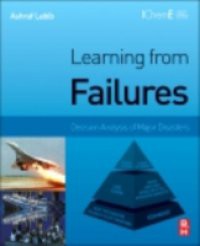Learning from Failures provides techniques to explore the root causes of specific disasters and how we can learn from them. It focuses on a number of well-known case studies, including: the sinking of the Titanic; the BP Texas City incident; the Chernobyl disaster; the NASA Space Shuttle Columbia accident; the Bhopal disaster; and the Concorde accident. This title is an ideal teaching aid, informed by the author's extensive teaching and practical experience and including a list of learning outcomes at the beginning of each chapter, detailed derivation, and many solved examples for modeling and decision analysis. This book discusses the value in applying different models as mental maps to analyze disasters. The analysis of these case studies helps to demonstrate how subjectivity that relies on opinions of experts can be turned into modeling approaches that can ensure repeatability and consistency of results. The book explains how the lessons learned by studying these individual cases can be applied to a wide range of industries. This work is an ideal resource for undergraduate and postgraduate students, and will also be useful for industry professionals who wish to avoid repeating mistakes that resulted in devastating consequences.Explores the root cause of disasters and various preventative measuresLinks theory with practice in regard to risk, safety, and reliability analysesUses analytical techniques originating from reliability analysis of equipment failures, multiple criteria decision making, and artificial intelligence domains

